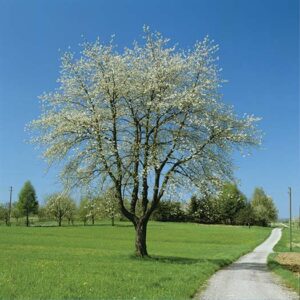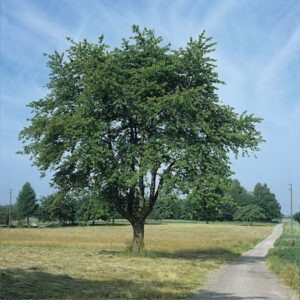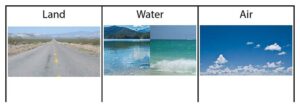Letter knowledge
Children will identify and name the letter U.


New:
Today we are going to learn a different letter of the alphabet.
[Display letter U card.]
Does anyone know the name of this letter?
 This is the letter U. We can write the letter U in two ways. We can write the letter U like this.
This is the letter U. We can write the letter U in two ways. We can write the letter U like this.
[Demonstrate writing an uppercase U at the top of a chart paper.]
This is an uppercase U.
We can also write the letter U like this.
[Demonstrate writing a lowercase u at the top of a chart paper.]
This is a lowercase u.
We have been learning about different kinds of weather in science. What can we use to keep us dry when it rains? We can use an umbrella! An umbrella is something you hold over your head to keep it dry.
The word “umbrella” begins with the letter u. I will write the word “umbrella” on our chart. I am going to write “umbrella” with a lowercase (small letter) u.
[Say each letter as you write the word. Emphasize u.]
Let’s all say the word “umbrella.”
[Invite a volunteer child to point to letter u in the word “umbrella.”]
Let’s look at the very first letter of our name. Pop up if you have the letter U at the beginning of your name. Remember, names begin with an uppercase (big) letter.
[Encourage children to look at their name cards. Say the first names of children who have a U at the beginning of their name. If there are children whose name begins with the letter U who do not stand, point to the letter U on their name card.
Compare the letter U in their name as you hold the letter U card next to their name card. If no one in the group has a first name beginning with the letter U, say “No one popped up because no one has a name that starts with the letter U.” Encourage children to look at the list of children’s first names. Point to some first letters of names. Explain that no one’s name begins with the letter U.
If a child indicates there is a letter U in his/her name, but not at the beginning of the name, fully recognize the name and invite the child to pop up. Day 4 gives attention to the letter u that appears somewhere else in a child’s name.]
Today we learned about the letter U. What word begins with the letter u? (umbrella)
Extra support
Enrichment
Provide alphabet puzzles. Encourage children to name the letters and their sounds as they complete the puzzles.
During outdoor play, encourage children to practice making a “U-turn” with their riding toys. Explain that a U-turn is in the shape of the letter U.
Number knowledge
Children will strengthen their understanding of taking away.

None

Review:
Offer the second segment of the Week 31, Day 4 activity to review take away.
Support children in determining how many in a small group of children are left when a given number of children leave the group.
Open the session by reminding children that a group gets smaller when we take away part of the group.
Invite five children to stand and form a small group. Encourage children to pretend the five standing children are the full number of children in the classroom. Invite children to pretend that three children left the group to do something else in your center. Then invite three of the five standing children to sit or move to another part of your classroom. Ask how many (standing) children remain in the group. (two) Explain that we started with five children in a group, three left the group, and two remain.
Repeat this procedure with different numbers of children in the group and different numbers of children who leave the group. You may wish to choose up to 10 children to stand in a group. Continue as time and interest permit.
Knowledge of earth and space
Children will understand basic characteristics of the summer season.


New:
Review:

Be Prepared: Wear summer clothing, such as sandals and sunglasses for today’s activity.
We are learning about seasons. Remember, a season is one of the four parts of the year. What season did we talk about yesterday? (spring)
Today we will talk about a different season. Please look closely at what I am wearing. What season of the year would we wear the things I am wearing right now? (summer)
We might wear these things in the summer. Summer is the warmest season of the year. I am wearing sandals and sunglasses because the sun can make the weather very warm in the summer. My sunglasses help protect my eyes from the bright sun, and my sandals keep my feet cool.
Summer does not feel the same everywhere. Some places get very hot in the summer. Other places are warm, but not hot, in the summer.
Does it get very hot in the summer where we live?
[Help children describe your summer season.]
 The sun can shine very brightly in the summer. We can see the sun more during the summer than any other season because it shines longer during the day.
The sun can shine very brightly in the summer. We can see the sun more during the summer than any other season because it shines longer during the day.
 Yesterday we looked at a picture of a tree in the spring. Let’s look at pictures of the same tree in the spring and in the summer.
Yesterday we looked at a picture of a tree in the spring. Let’s look at pictures of the same tree in the spring and in the summer.
[Display pictures of same tree in spring and summer. Point out which picture is spring and which picture is summer.]
How is our tree different in the spring compared to the summer? (flowers in spring, leaves in summer)
There are many things that people can do outside in the summer. Some families can go swimming outside, and some may like to go to a park.
What things do you like to do in the summer?
Today we will make a class book about the season of summer. We will think of our favorite thing to do when it is warm and sunny outside and draw a picture of ourself doing our favorite thing in the summer. We will put the pages together to make a book when we are done.
[Give each child a piece of paper and drawing tools. Talk with children about their pictures as they draw. Write on each picture the names of activities or items children include in their drawings. Examples: bike riding, climbing a tree. When all children have finished, staple pages together to make a book. Place the book in your classroom library for children to enjoy.]
Today we learned about the summer season. We made a class book of our favorite things to do when it is warm and sunny outside.
Extra support
Enrichment
In the housekeeping center, provide children with clothing items that can be worn in the summer. You may also wish to provide “summer” props for pretend play. Examples: beach towel, empty sunscreen bottle, sunglasses, small pool floats.
Encourage children to show and describe their drawing with a family member at pickup time. Some children may wish to show and describe other children’s pages, too.
Exploring Where We Live
Social Studies
Skill and Goal
Knowledge of social and physical environments
Children will identify types of transportation used on land, water, or air.
Materials
Needed
*Printables provided
Key
Concepts
Review:
Optional
Reading
We are learning about different types of transportation. What does transportation mean? (the way people or things move from one place to another place)
[Display chart from Day 1. Point to it when mentioned.]
Yesterday we thought of different kinds of transportation. Our ideas are written on our chart.
[Point to and read words on the chart.]
All of the words I read are kinds of transportation.
Today let’s talk about whether a kind of transportation uses land, water, or air to move from one place to another place.
[Display chart showing road, water, sky. Point to each picture as you describe it.]
Our chart shows land, water, and air.
I am going to give each of you a picture card that shows one kind of transportation. Some of you will have the same picture. Some of the cards may show kinds of transportation we talked about yesterday.
I will hold up a picture card. Look at your card to see if it is the same as my picture. Hold up your card if it is the same as my card. Then we will talk about the picture shown on the card.
[Distribute cards. If there is an uneven number of children in your group, serve as the “partner” of the child who receives the only copy of a sorting card. Use the following procedures with each card:
It is not necessary for children to know the specific name of a kind of transportation. Example: It is fine for a child to say “plane” for a fighter jet. The intent of the activity is to promote children’s sorting skills. Most of the pictured types of transportation are discussed in later sessions.]
Today we looked carefully at different kinds of transportation. We put together transportation that goes on land, water, and in the air.
Scaffolding Tips
Extra support
Enrichment
Center Activity
Provide fiction and non-fiction books about different types of transportation. You may also wish to provide multiple puzzles depicting different types of transportation. Include puzzles with different numbers of pieces.
Another center option is to provide a collection of the picture cards for children to sort into the three catagories used in the group activity (land, water, air).
Family Child Care
With a smaller group of preschool-age children, limit the number of different types of transportation to one or two in each of the three categories (land, water, air).